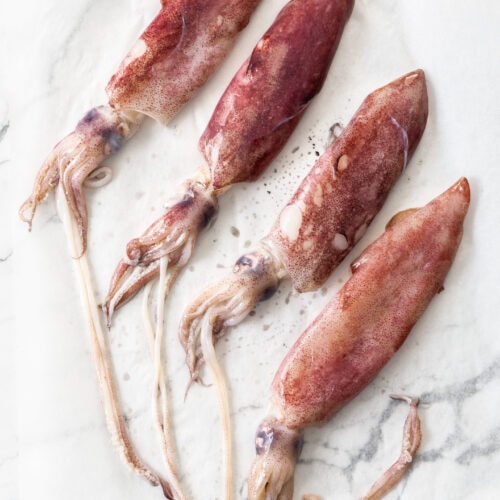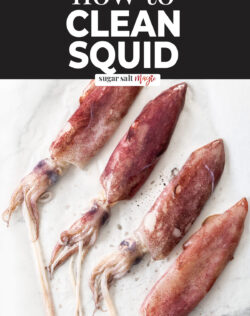Creating calamari rings is simple with this 8 step guide on how to clean squid. Here you’ll discover how to separate the parts of squid and which parts to throw away. While you could get your fishmonger to clean the squid for you, it may come at a cost and doing it yourself, at home is not difficult at all.
Try to get your squid fresh if possible but if you can only get it frozen, make sure it’s raw then let it thaw in the fridge overnight before using the next day. You can also speed up the thawing process by submerging in tap water for a few minutes, tip the water away and replace. Do this a few times over making sure the squid are still cold.
From the crisp and flavour of crispy fried calamari, like calamari fritti or salt and pepper squid to grilling to stuffed squid there is a variety of squid dishes for any seafood lover to enjoy.
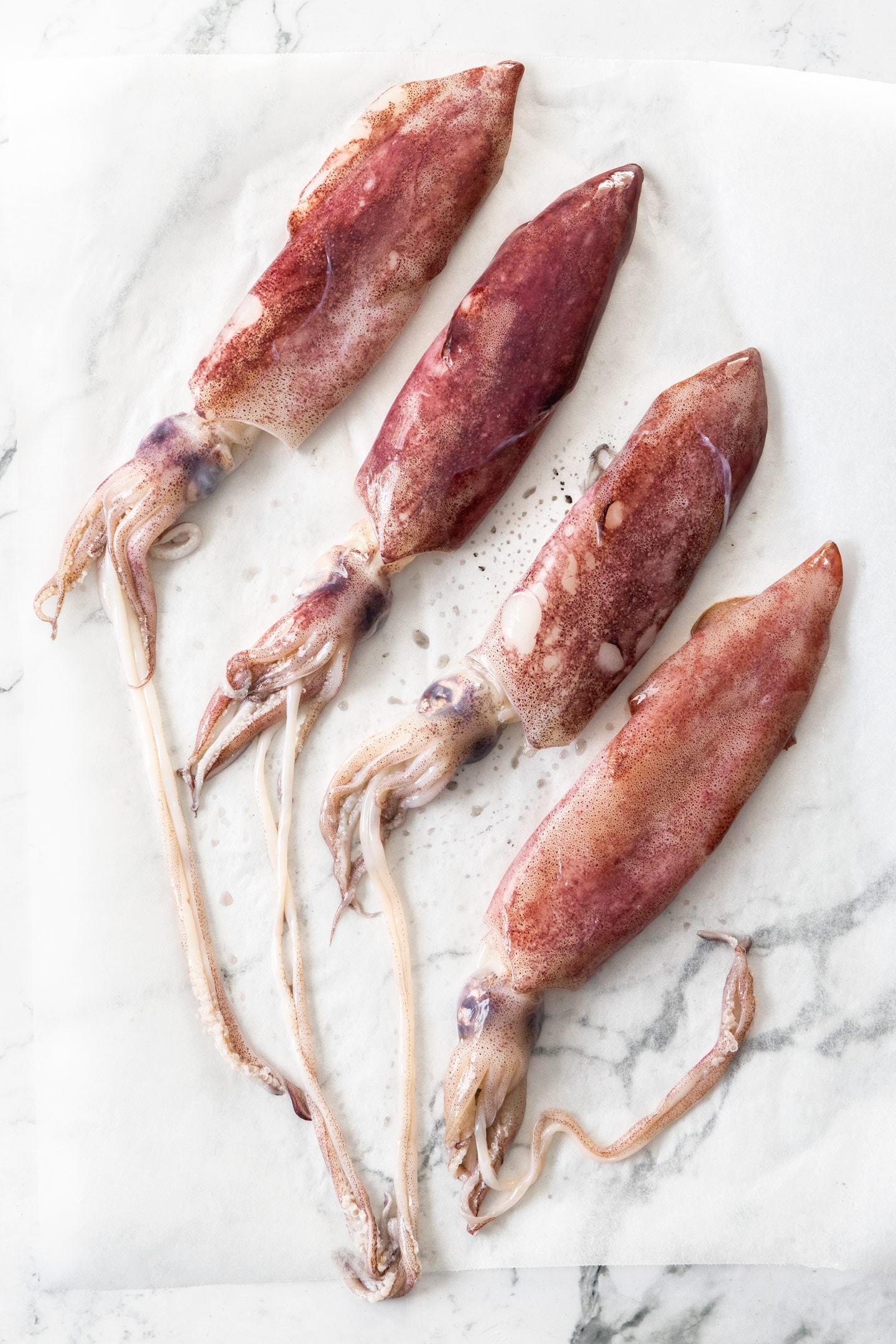
Never Miss a Recipe!
Get the latest recipes straight to your inbox!
Squid vs calamari
Squid and calamari are just two names for the same thing. Calamari comes from the Italian word for squid – calamaro.
Anatomy of squid
Right, let’s get a quick course on the parts of a fresh squid.
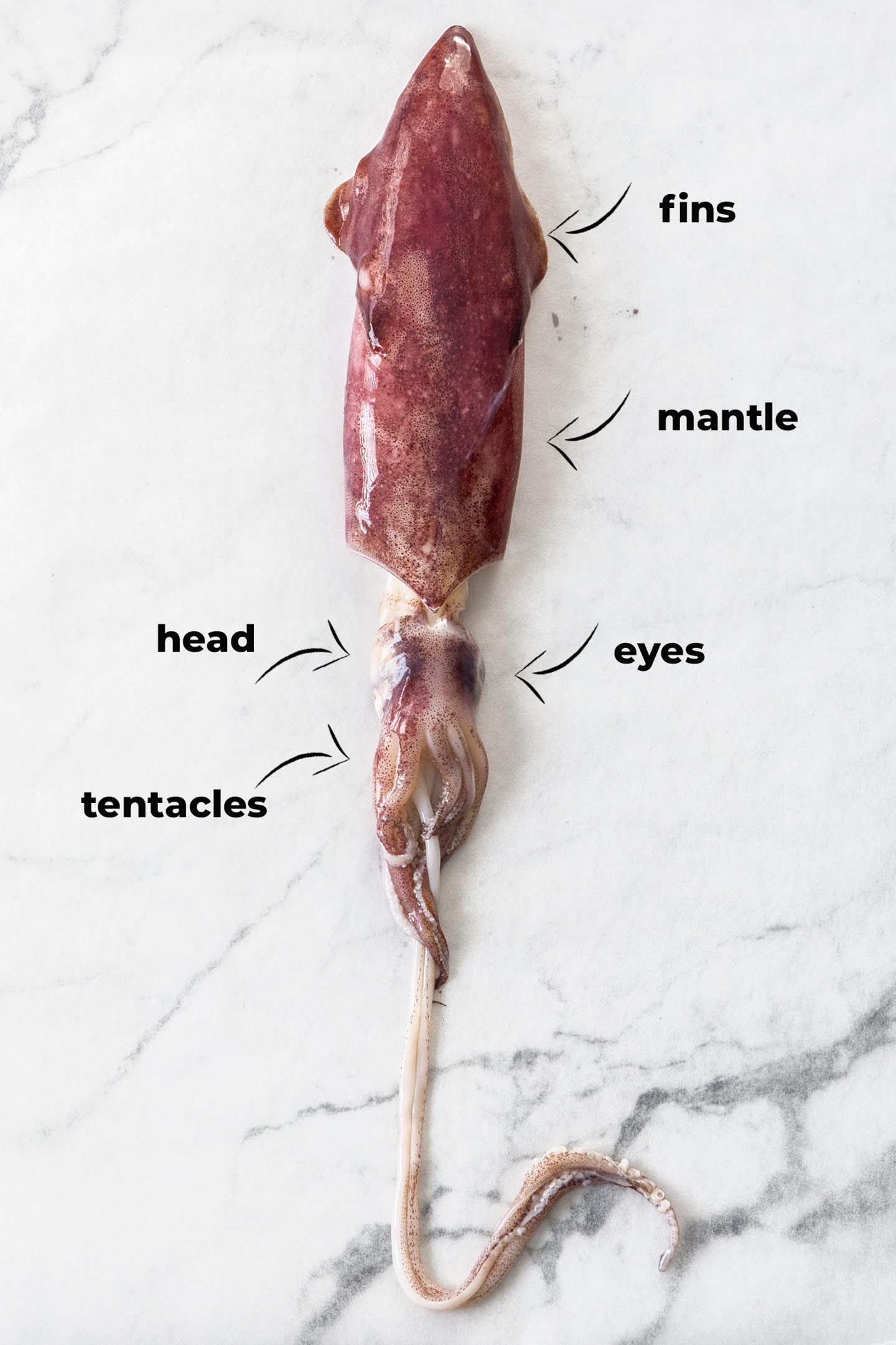
Tentacles: The tentacles are the long legs attached to the body of the squid. There are normally 8 shorter ones and 2 long ones, all with little suckers on one side.
Beak: Sitting at the top of the legs, below the eyes, there is a little hard piece inside. Once you cut the legs away you can squeeze this part out and discard it.
Eyes: Those beady eyes. We’ll cut those away and discard them.
Mantle: Often called the hood, this is the big flat piece that holds all the internal organs, ink sac and where the head pokes out from.
Fins: There are two fins attached to the mantle. These are edible and can be left attached or peeled off for cooking.
Skin: There is a thin, purple membrane that covers the squid, which is it’s skin. While it’s completely edible, it’s often peeled away for aesthetic purposes.
Gladius/Pen: The skeleton of a squid is just a thin, clear piece of shell that sits inside the squid to protect the internal organs. It’s easy to pull out and discard. It’s often referred to as the backbone.
The ink sac: Squid ink is completely edible and sits inside a little sac above the head and inside the mantle of the squid. Feel free to harvest it if you want to try it in sauces or to make squid ink pasta.
It can be a bit messy so why would you clean squid at home rather than buying pre-cut rings from the freezer section? Flavour and price. Fresh or even frozen whole squid have a better flavour than the sort that has been pre-cleaned and sliced and frozen for later. You also get more for your money, especially if you like squid ink.
How to clean squid
It’s easy to prepare squid once you know how. These easy step by step instructions will show you how simple it is. Squid ink can stain so wear gloves if you’re concerned about it staining your fingers.
1. Remove the tentacles
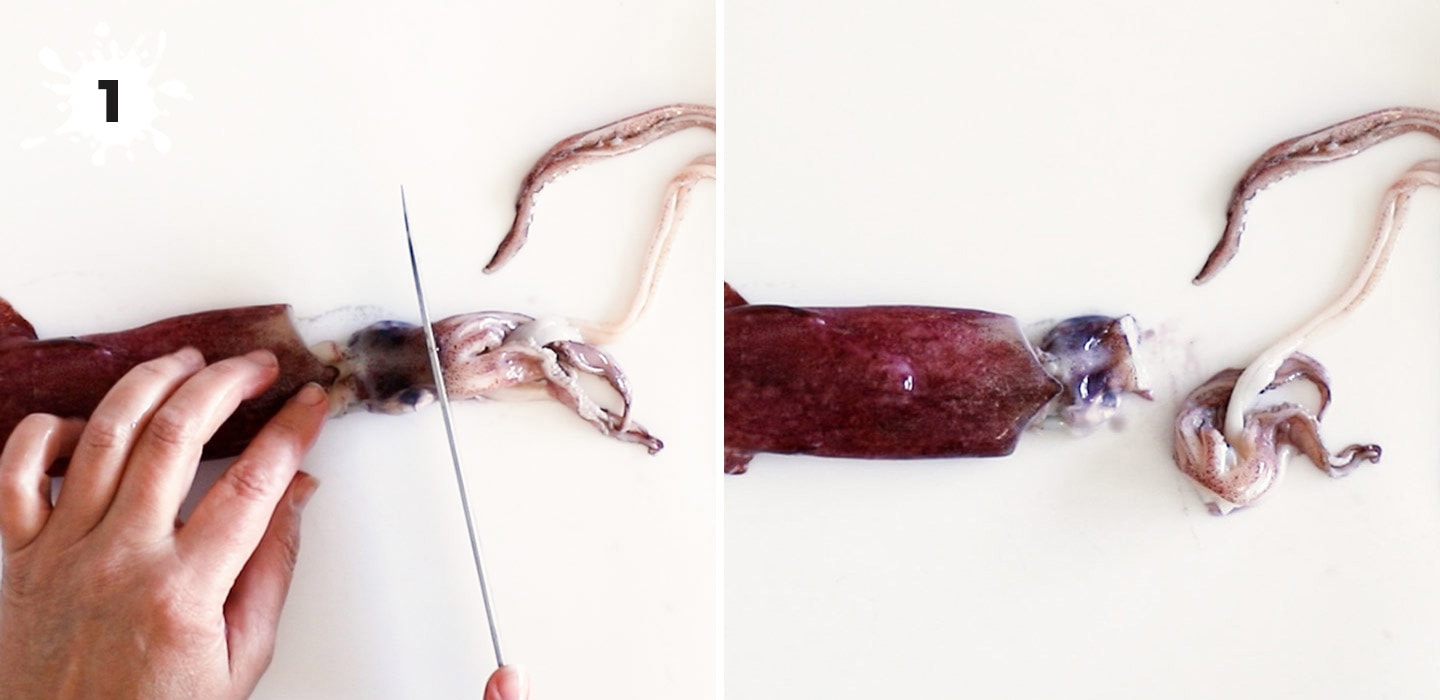
Lay the squid out on a large chopping board. Use a sharp knife to slice the tentacles away, below the eyes of the squid.
2. Remove the beak
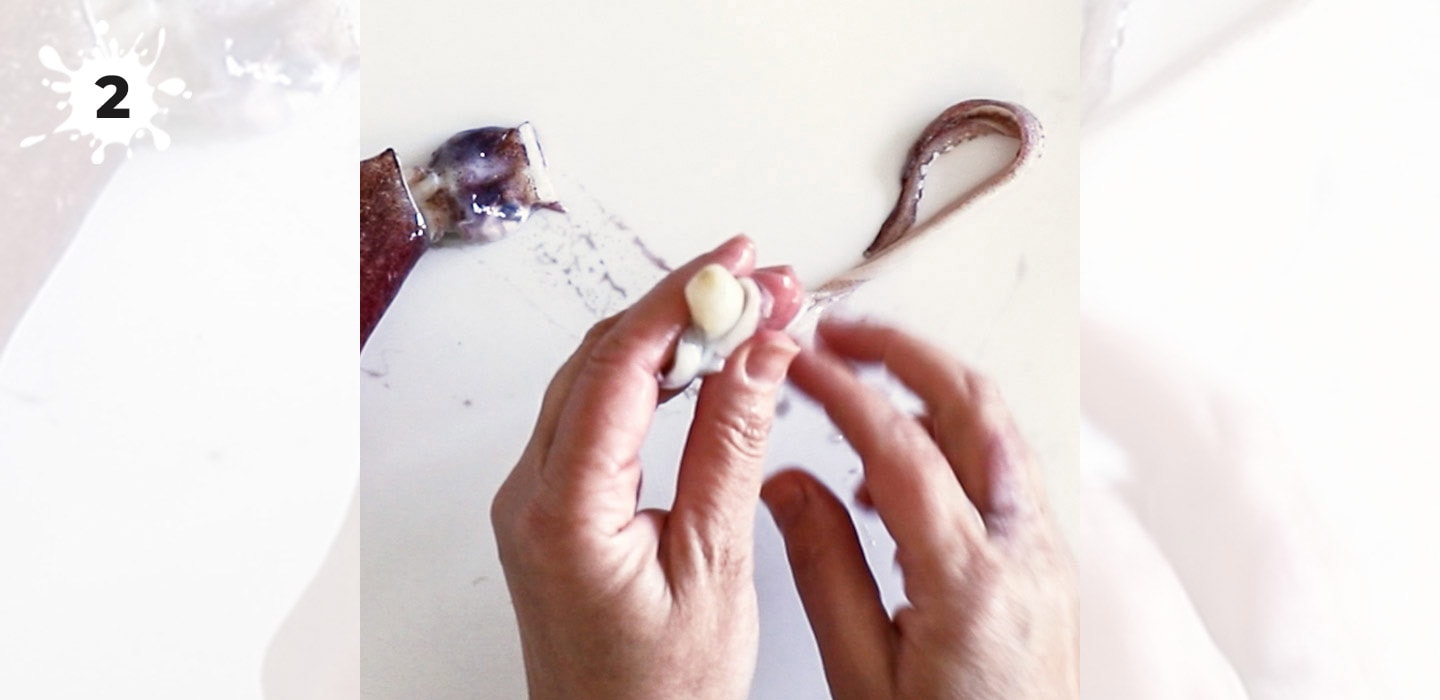
Hold the cut side of the tentacles up and press gently – you’ll feel a firm part inside which is the squid beak and it’s inedible. Give it a gentle squeeze to press it up out of the hole, then pull it away and discard. If there is no hole there to get the beak out, flip the tentacles over and push it out through the base of the tentacles.
3. Cut the tentacles
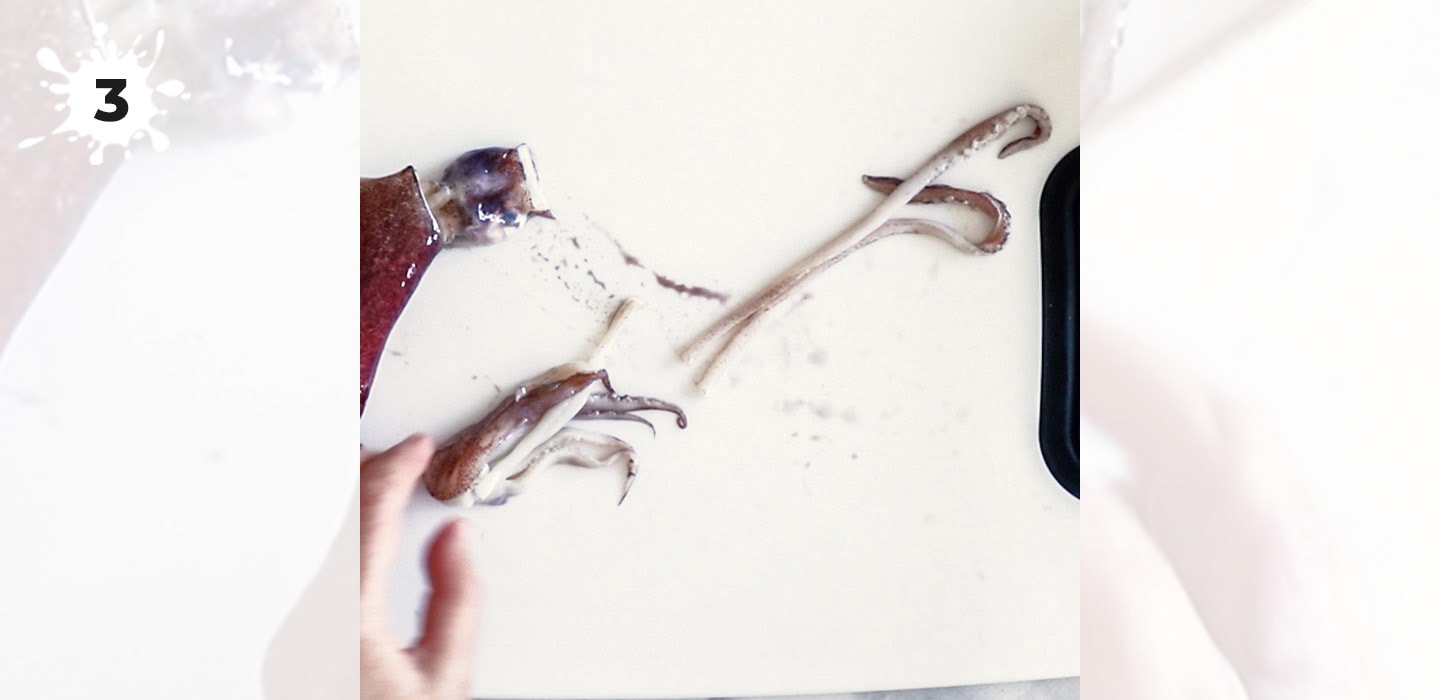
This part is optional but I like to cut the longer tentacles away from the section of smaller tentacles. Now set the tentacles aside on a clean plate, they’re ready to go.
4. Remove the innards
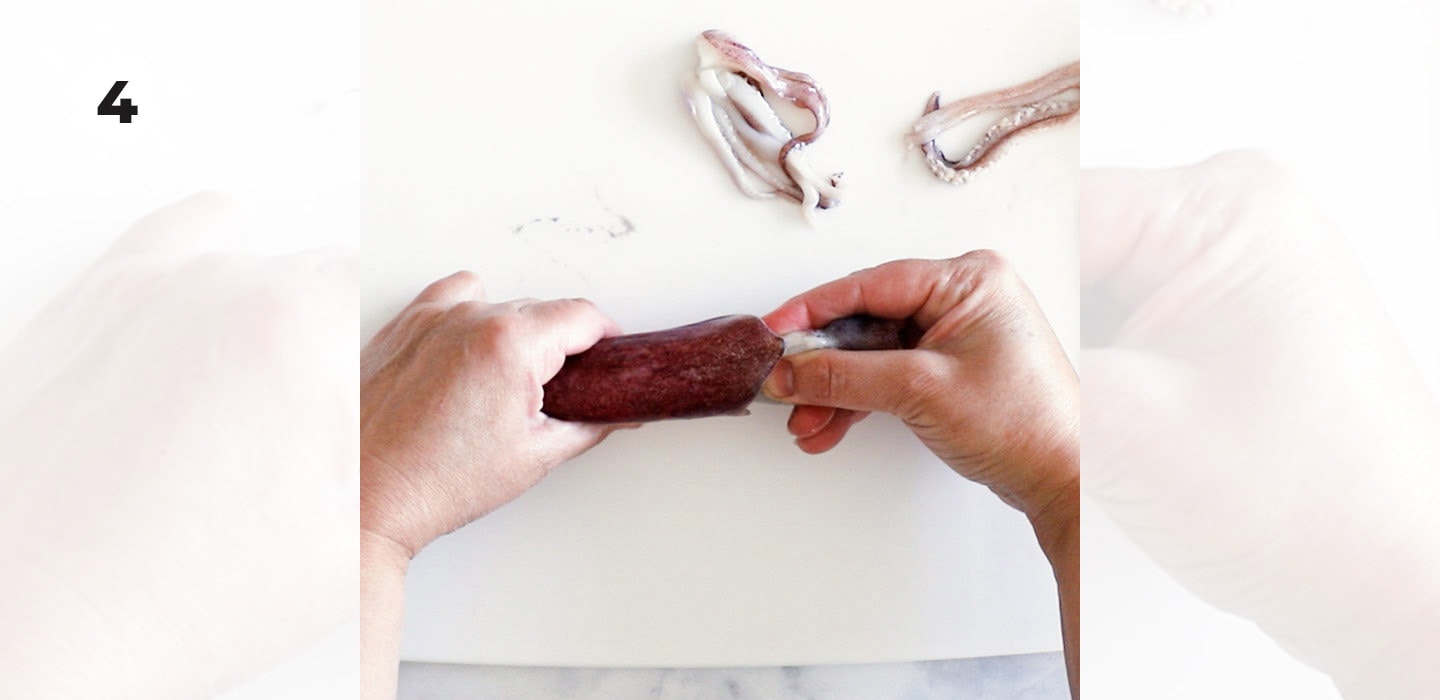
Reach your fingers just inside the mantle and grab hold of just above the head. Pull the head away from the body, gently but firmly, twisting a little. Discard all of this portion. Reach inside or use a teaspoon to reach in and scrape out any innards that were left behind.
5. Remove the pen
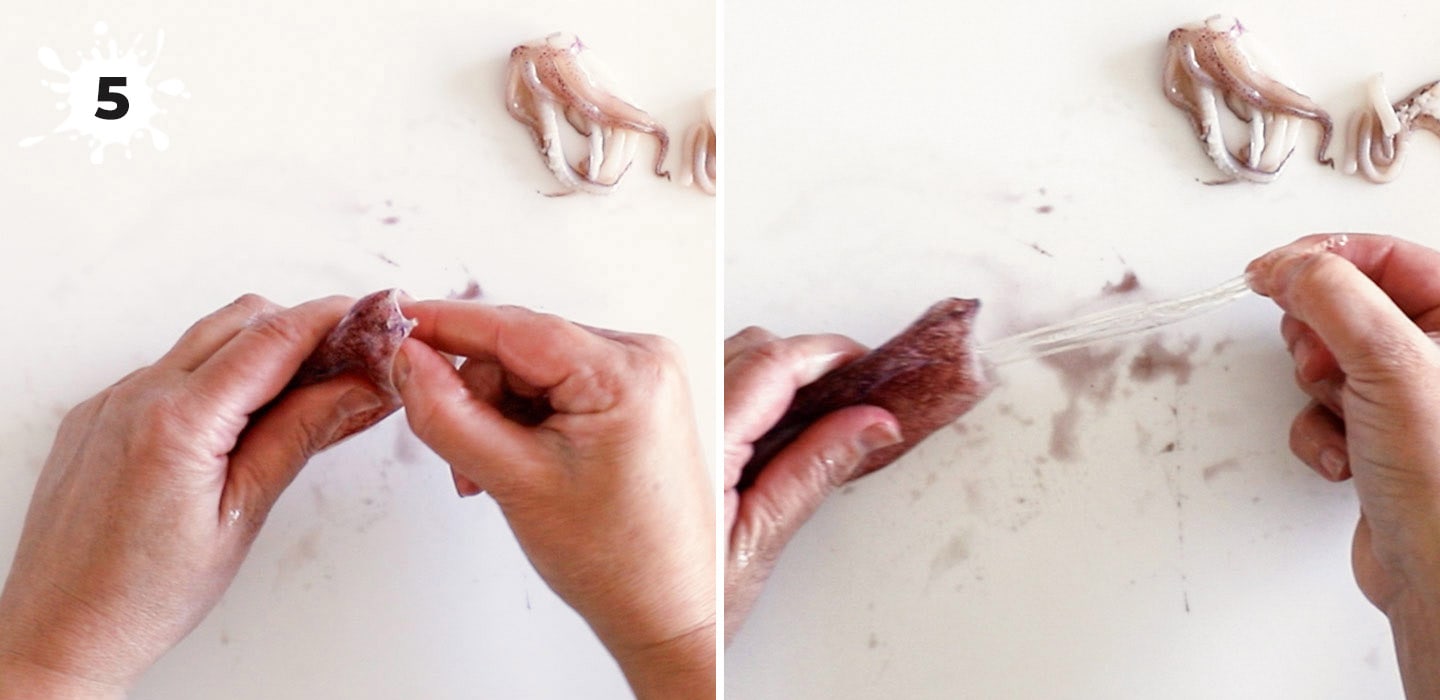
There should be a little pointy part on the open edge of the body/mantle – that’s where the pen is on the inside (a thin, clear piece of skeleton). Grab a hold of the pen and pull it out, making sure if it snaps to reach in and get the rest. Discard that too.
6. Remove the skin
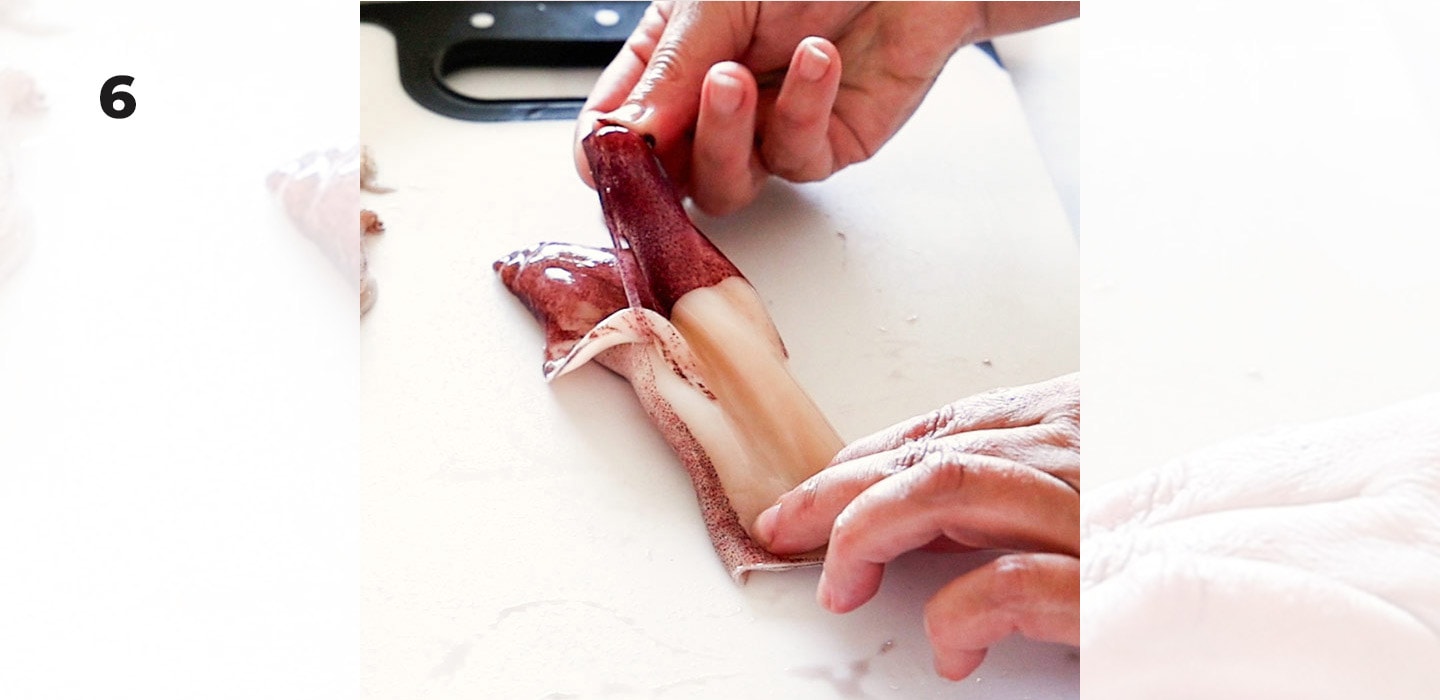
Pinch the skin to break a little piece then lift and carefully peel it away. It might break but just keep pinching and peeling and it should come away fairly easily. Give the inside of your squid tube a rinse out at this point.
7. Remove the wings (optional)
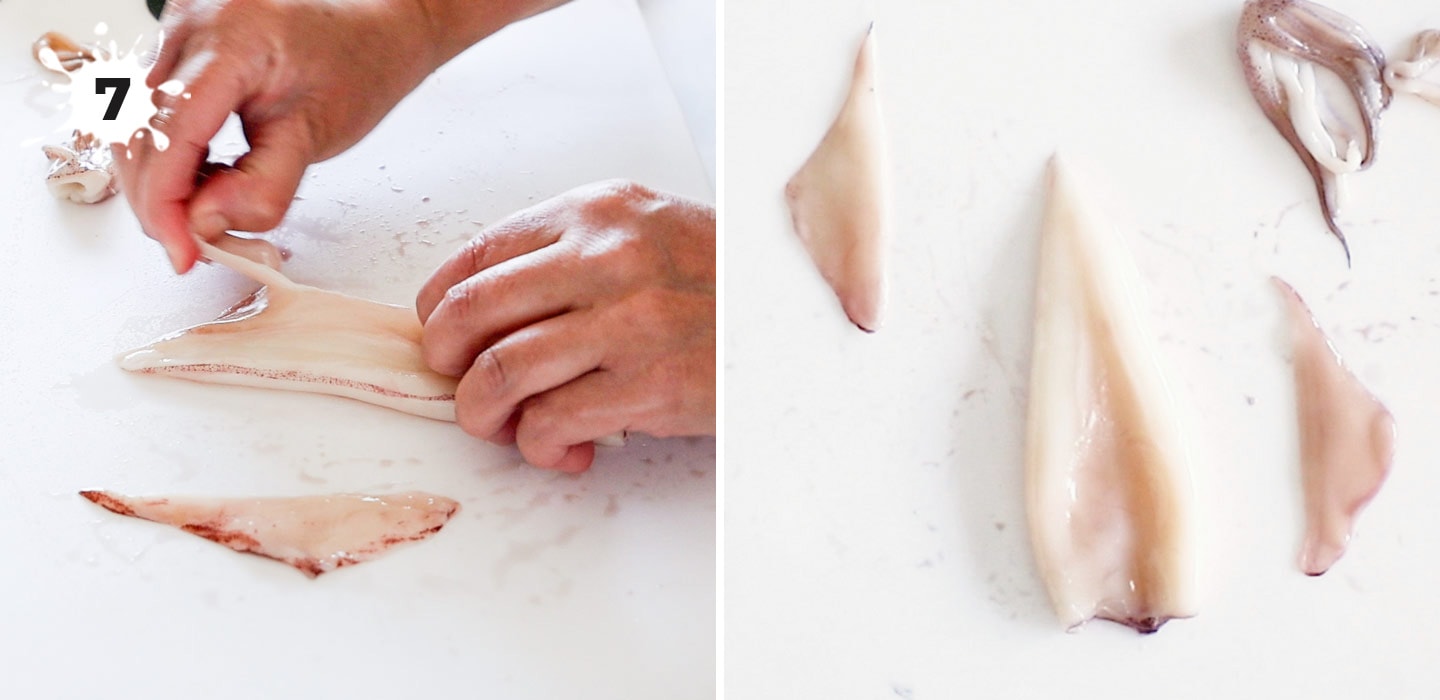
While you can leave the wings/fins on your squid, I like to remove them so that I get nice smooth rings of calamari at the end. Just grab hold of them at one end and peel them away from the body. These are edible so set them aside with your tentacles.
8. Slice the body
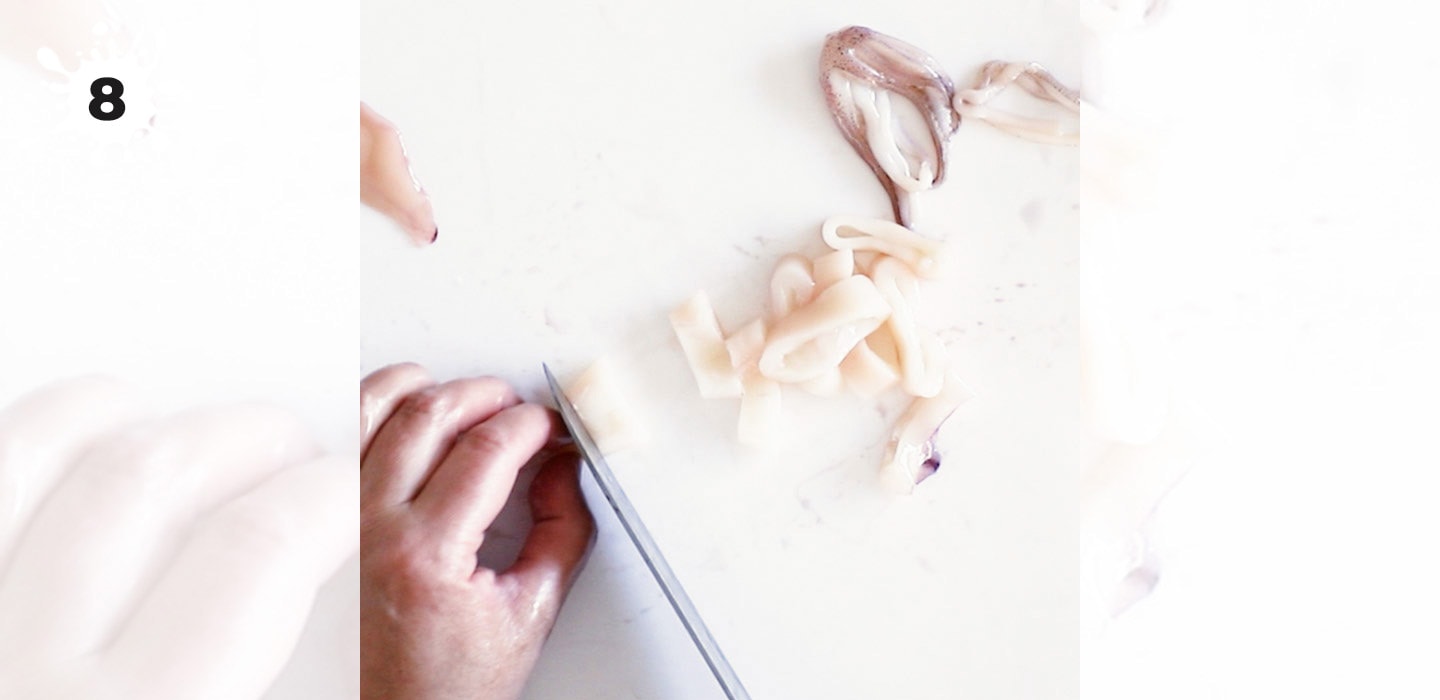
Now you can slice the body and there are two typical ways of doing this.
- The first is by simply slicing it into rings. Just slice at 8mm/⅓-inch intervals through the body to give you rings of calamari.
- The second way is to slice the body open by inserting the knife and slicing it outward along the natural crease on one side of the body. Unfold the squid tube and run your knife lightly across the inside of the squid tube on the diagonal. You don’t want to cut through, just make light cuts on the inside of the squid. Now turn it and cut in the other direction to create a crisscross pattern. You can now slice the whole squid tube into two big pieces or 4 smaller pieces. As the calamari cooks, it will curl up showing that little crisscross pattern on the outside.
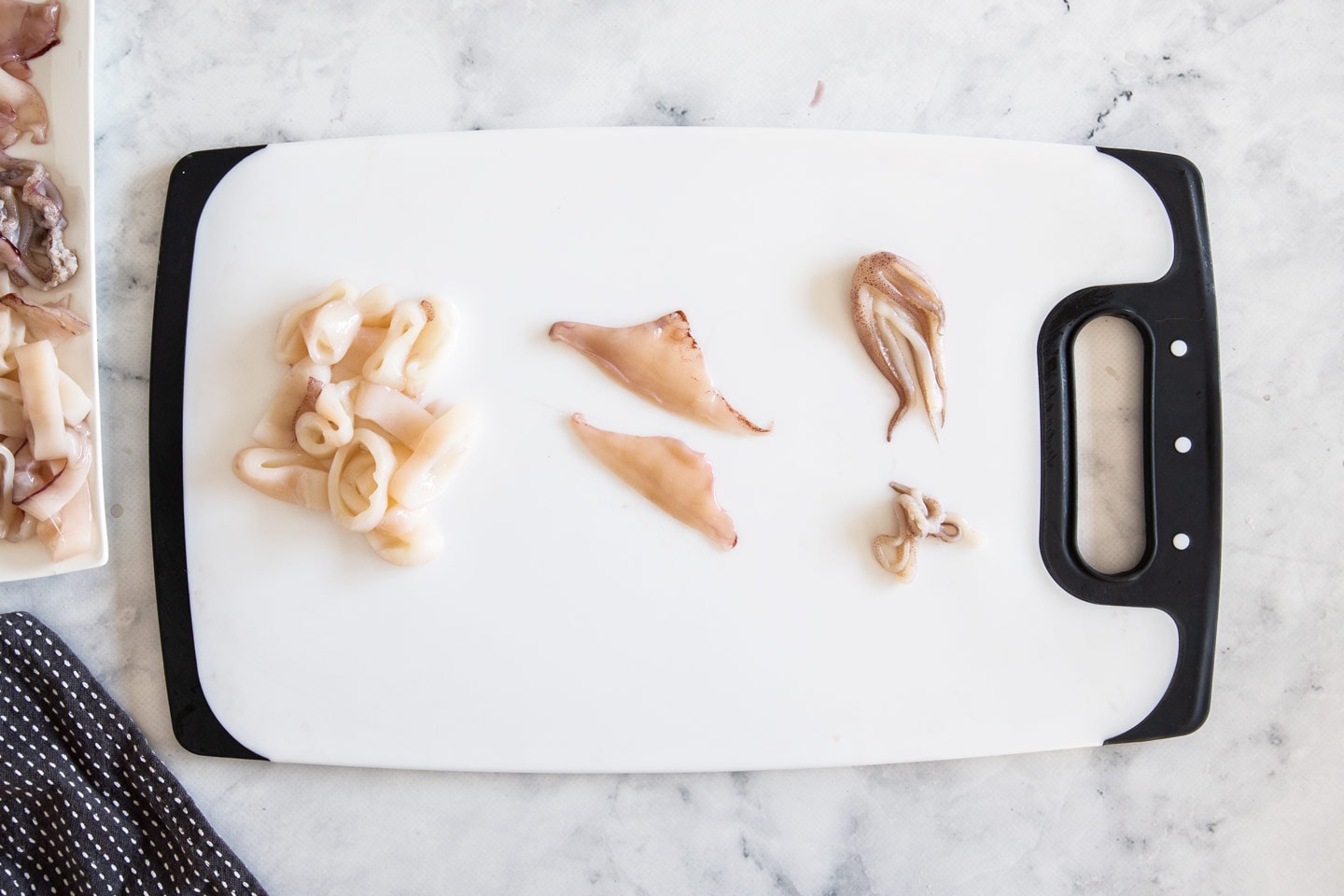
How to harvest squid ink
If you want to use the squid ink in other dishes, often just a few drops is enough to add a lovely flavour and colour.
The ink is contained in an ink sack in the innards just above the head. It looks a bit like a small black vein. Add a tablespoon of liquid like water or vinegar to a small non-porous dish (since squid ink can stain porous surfaces) then cut the ink sac with the tip of a small sharp knife. Gently press the ink out of the ink sac and into the dish. Freeze for up to 3 months.
You can use an ice cube tray if you don’t mind it becoming stained, then just add a cube to your dish when cooking. Add a tablespoon of water per ink sac as a little goes a long way in cooking. You can dilute it more if needed during the cooking process.
If you use this guide to clean your squid, I’d love to hear your thoughts in the comments below.
Hungry for more? Subscribe to the newsletter for free recipes straight to your inbox. Also, follow along on Facebook, Pinterest and Instagram.
This post may contain affiliate links that earn me a small commission for my referral, at no extra cost to you. Thank you for supporting Sugar Salt Magic.

